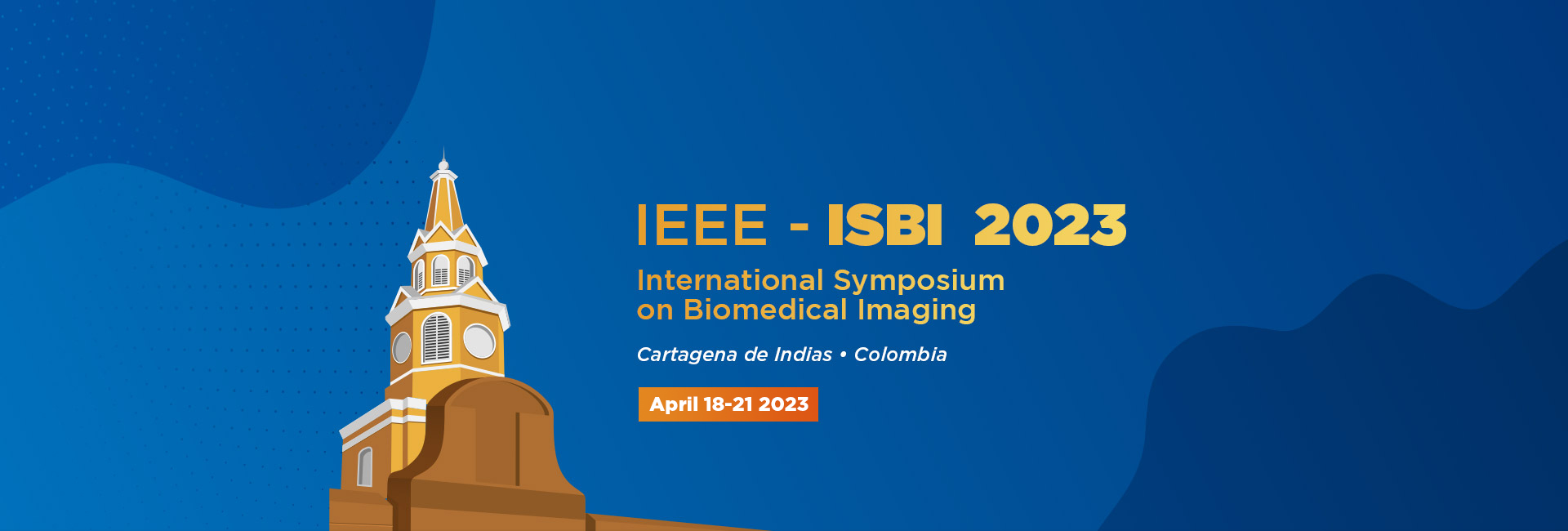SPECIAL SESSIONS
Accepted Special Sessions
Wasserstein Distance in Biomedical Imaging
Organizers: Moo. K. Chung
Abstract: The main aim of the session is to increase the awareness of the Wasserstein distance and optimal transports in medical imaging to the ISBI community. The Wassersstein distance or Kantorovich-Rubinstein metric is a metric defined between two probability distributions. The distance can be viewed as the optimal transport restricted to probability distributions. Numerous studies have demonstrated superior performance over more traditional Euclidean or geometric distances. The method can work particularly well when it is difficult to establish the direct distance between data. The session brings an opportunity to showcase its powerful uses in various applications including hyperbolic embedding, Schrodinger bridges, deep learning and topological data analysis. It is hoped that this session will provide a forum for constructive discussions on Wasserstein distance related methods. The proposed session consists of lectures given by 4 invited researchers.
Advanced Photoacoustic Imaging: Systems, Algorithms, and Applications
Organizers: Chulhong Kim
Abstract: High-resolution volumetric optical imaging modalities are growing in their importance for biomedical imaging. However, due to strong light scattering, the penetration depth is limited to ~ 1 mm in biological tissues. Photoacoustic imaging, an emerging hybrid modality that can provide strong optical absorption contrasts, has overcome the fundamental depth limitation of optical imaging by maintaining excellent spatio-temporal resolution representative of ultrasound imaging. The resolution and the maximum imaging depth are scalable with ultrasonic frequency within the reach of diffuse photons. The imaging depth can be up to a few centimeters. Furthermore, photoacoustic imaging can noninvasively deliver anatomical, functional, and molecular information from living tissues. For highly sensitive molecular photoacoustic imaging, exogenous contrast agents with biomarkers are commonly utilized. Thanks to sharing the same signal detection mechanism with conventional ultrasound imaging, photoacoustic imaging can be easily adapted with the existing ultrasound imaging systems. Thus, clinical translation and commercialization should be relatively easy.
In this Special Session, the following topics will be discussed; (1) recent progress on photoacoustic/ultrasound imaging, (2) advanced image processing including deep learning, (3) potential and/or ongoing clinical translation, and (4) industrial perspectives of photoacoustic/ultrasound imaging and challenges for commercialization.
10 years of reproducibility in biomedical research: how can we achieve generalizability and fairness?
Organizers: Camille Maumet
Abstract: 10 years ago, a series of publications pointed to the difficulty of reproducing scientific findings. This reproducibility crisis was a wake-up call for scientific communities to rethink how we practice and communicate research, and an important driver towards greater transparency and robust results. Ever since, biomedical imaging undertook various efforts to overcome reproducibility issues: From increasing sample sizes for higher statistical power, to data sharing and increased collaborations to acquire such samples, and promoting detailed reporting practices and code sharing to ease computational reproducibility.
But where are we standing with respect to reproducible biomedical imaging now? We discuss recent advances and open questions, and focus on how the conversation has moved beyond efforts to reduce false positive findings to broader questions of generalizability and fairness. How does a finding observed in a given group apply to the population at large? How does a finding obtained with one analysis vary when computed using another tool? How does a finding observed in a given group apply to subgroups of that population, in particular to less represented subgroups? How can open science help with the complex questions of building fair algorithms and fairness in who participates in the process of science?
How image computing can make a real impact in the radiotherapy workflow: challenges and opportunities
Organizers: Eliana Vasquez Osorio and Jamie McClelland
Abstract: Images are essential in radiotherapy. They are used in every step of the patient’s pathway, including at diagnostic, treatment planning and delivery, and during patient follow-up. Each step has challenges and opportunities that could benefit from clever solutions being developed by researchers working in image computing. However, many of the clever solutions proposed by image computing researchers do not fully address the most important or challenging clinical problems and achieve limited real-world impact.
In this special session we will have four speakers who work in the field of radiotherapy, bringing the domain knowledge to identify the real problems, challenges, and opportunities where image computing solutions can impact millions of patients. The talks will explore the current clinical workflow, the role of image computing in emerging radiotherapy technology, challenges at translating ‘solved’ problems to clinical practice (namely segmentation) and end with unsolved challenges and promising solutions.
We will introduce and highlight current problems aiming at enticing the interest of the ISBI community to further build bridges between these fields. If you are a researcher with an interest in solving real world problems, do not miss this session!
Artificial Intelligence in Cancer Imaging: Results from the AI4HI European Program
Organizers: Dimitrios I. Fotiadis and Karim Lekadir
Abstract: Artificial Intelligence for Health Imaging (AI4HI) is a European research program which comprises five large-scale projects, 90 institutions and more than 20 European clinical centres, which are investigating new approaches for the development of trustworthy AI tools in cancer imaging. This special session will present results from the AI4HI program to illustrate recent advances in AI for cancer imaging and promising applications for AI-enhanced image-guided cancer care. First, the FUTURE-AI guidelines for trustworthy AI will be presented, including recommendations and approaches for designing, implementing, validating and deploying AI solutions that are Fair, Universal, Traceable, Usable, Robust and Explainable (FUTURE-AI). Subsequently, several talks will present and discuss a number of methods and results based on multi-centre cancer imaging data and real-world clinical use cases. These will include data synthesis, bias correction, federated learning, image harmonisation and explainable AI, with applications to breast and prostate cancer imaging. The session will also include discussions with the audience to share different experiences and perspectives on AI for cancer imaging, in Europe and around the world.
Bimodal functional neuroimaging data fusion: methods and applications
Organizers: Claire Cury and Julie Coloigner
Abstract: Combining different neuroimaging modalities, such as EEG, fMRI, MEG or diffusion imaging, could expand the knowledge of our brain and exhibit robust biomarkers, more sensitive to pathophysiological changes. Recent research trends focus on integrating functional and structural modalities to enhance high-resolution spatiotemporal neuroimaging information. However, the integration of these modalities remains a real challenge in data fusion modelling of information from different sources (signals/images) and different dynamics. More specifically, the multi-modal setting and information processing, especially when recording EEG during fMRI, implies overcoming technical and methodological aspects. Recently, new procedures have been developed to allow real-time analysis for bimodal neurofeedback studies. This session highlights the recent advances in bimodal data fusion towards better feature extraction for more specific and robust brain functional understanding. The speakers will present their recent methodological development using different combinations of modalities and targeted applications, such as brain rehabilitation via neurofeedback, introducing this neuroscience technique into the ISBI community.
Geometric Deep Learning in Medical Imaging
Organizers: Gang Li
Abstract: Deep learning has achieved overwhelming success in learning effective features for 2D/3D images in the Euclidean space. However, many medical imaging data are intrinsically represented as graphs or manifolds in the non-Euclidean space, e.g., brain cortical surfaces and structural/functional networks. Conventional deep learning techniques, especially convolutional neural networks (CNNs), which are inherently limited to 2D/3D grid-structured data, are thus not suited for handling these non-Euclidean medical imaging data. Therefore, many dedicated geometric deep learning (GDL) methods are proposed for learning more effective representations of non-Euclidean data for solving various challenging problems in medical imaging. This session will introduce the development and applications of some advanced GDL methods in medical image analysis, e.g., parcellation, registration, prediction, etc. We will also give a brief discussion on current challenges and future directions of GDL in medical imaging, hoping to arouse the attention of the audience and interest from the ISBI community, thus inspiring more and deeper research achievements in this field.
Study of superficial white matter fibers based on diffusion MRI
Organizers: Pamela Guevara and Jean-François Mangin
Abstract: Short association fibers are located in the superficial white matter (SWM), travel tangentially along the cortical folding, and re-enter the cortex to connect adjacent or close gyri. These fibers constitute the vast majority of cortico-cortical connections in the human brain. However, the description of their structural organization is still an unachieved task, due to their higher inter-subject variability and smaller size, in comparison to the known long association, projection, and commissural bundles. The description of short association fibers is essential for understanding human brain dysfunction and better characterizing the human brain connectome. Thanks to recent advances in diffusion MRI techniques and dedicated algorithms, tractography datasets may contain a large number of short association fibers. Their study requires specialized algorithms to identify and characterize them and perform population analyses. In recent years, several works have been proposed aiming to provide a better description of these fibers. Also, new methods have been developed and adapted for their segmentation and analysis. Furthermore, applications to different pathologies have shown their relevance in brain dysfunction. In this session, we will describe the state-of-the-art in the study of SWM fibers and discuss the current challenges for their analysis.
Machine Learning in Medical Imaging
Organizers: Diego Cantor
Abstract: Join us at the special session on Machine Learning at ISBI 2023. This session brings together researchers from multiple disciplines, including artificial intelligence, computer science and biomedical engineering who have presented their recent work at prestigious conferences such as NEURIPS, CVPR, and ICML. The session presents the latest advancements in the application of machine learning in medical imaging and is a unique opportunity to learn about innovative techniques and approaches that are transforming the field of medical imaging and improving patient outcomes. You will have the chance to hear from experts in the field and engage in discussions with peers to shape the future of medical imaging.
Don’t miss this opportunity to explore the latest research, connect with leading experts and expand your knowledge in the application of machine learning in medical imaging at ISBI 2023.















